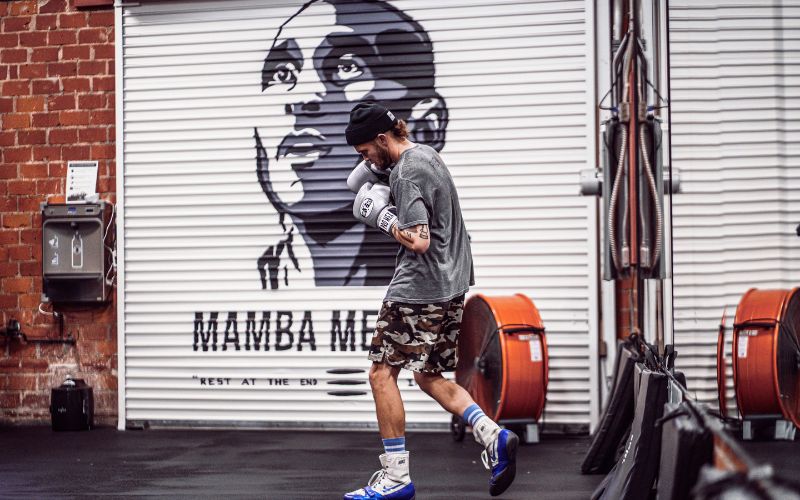Balance, often an overlooked aspect in boxing, plays a pivotal role in a fighter’s performance in the ring.
Balance is important in boxing because it allows fighters to execute powerful punches, maintain stability during offensive and defensive maneuvers, and prevent injuries. By mastering proper stance, center of gravity awareness, and coordinated movements, boxers can optimize their performance and enhance their overall abilities.
In the following sections, we will delve into the importance of balance and how it contributes to a boxer’s success. By understanding and mastering these key elements, a boxer can enhance their overall performance, from delivering powerful punches to executing seamless footwork and evasive maneuvers.
Maintaining correct base and stance
Maintaining the correct base and stance is the foundation of balance in boxing, a crucial factor that can significantly impact a fighter’s performance. A proper base and stance not only enhance overall boxing abilities but also aids in injury prevention. As a boxer, being conscious of your center of gravity and its position within your support base allows you to deliver punches with optimal power and efficiency.
Perfecting your stance and mastering your balance enables you to launch attacks with the proper kinetic transfer, resulting in stronger and more powerful punches. Furthermore, a well-balanced stance allows you to maneuver and dodge an opponent’s punches more effectively and absorb damage better. The importance of an accurate stance and base in boxing is paramount.
To achieve this ideal stance, boxers must remain fluid, loose, and relaxed, ready to unleash their techniques without being stiff and tense. Muscle tension depletes energy quickly and leads to the rapid accumulation of lactic acid, causing fatigue in the arms and legs. By staying relaxed, a fighter can maintain their balance and preserve energy for explosive movements when required.
Developing the correct base and stance requires deliberate practice and a varied approach to training. This ensures that boxers develop the necessary body awareness and improve their balance. A well-rounded training regimen should include techniques that focus on both static and dynamic balance, as deficits in either can increase the risk of injury.
Higher-level athletes consistently demonstrate superior balance abilities, showcasing the importance of balance as a key component of functional fitness. Research highlights the consistent links between balance and multiple performance measures, further emphasizing the need for boxers to prioritize balance in their training.
Awareness of the center of gravity

Awareness of the center of gravity is crucial for maintaining balance and improving performance in boxing. Understanding and controlling your center of gravity ensures that you have a solid foundation, allowing you to generate power and move efficiently around the ring.
Incorporating footwork, shadowboxing, and technique drills into your training helps improve muscular coordination and neuromuscular efficiency. These exercises emphasize maintaining an active awareness of your body’s center of gravity, keeping your upper body aligned over your lower body while you move.
Bending your knees in a fighting stance lowers your center of gravity, increasing stability and enabling the generation of force from the lower body to the fist. Coordinating the movements of the upper and lower body maximizes the transfer of force through the kinetic chain, enhancing rotational power and speed. Rapid rotation of the hips and torso allows you to apply the full force of your body weight for more powerful punches.
Being conscious of your center of gravity during the early stages of learning the basics is essential for developing good balance. It is important to strike a balance between having a low center of gravity for stability and being mobile enough for quick movements and combinations. Every movement in boxing momentarily takes you off your center of gravity, making it crucial to quickly return to a balanced position.
Ideally, a boxer should have a low center of gravity, as it makes them less likely to lose balance during a fight. This enables them to exert more force and push their opponents around.
Two sumo wrestlers squaring off exemplify this concept, as they both attempt to maintain a low center of gravity to tip the other off balance. As a boxer, the goal is to consistently keep your center of gravity low to move powerfully and tip your opponent off balance.
The challenge lies in controlling your center of gravity while moving around the ring and throwing punches. To achieve this, bend your knees and move your body in harmony with your center of gravity, ensuring your upper body remains over your center of gravity at all times.
This prevents leaning too far forward or backward, which can compromise your balance, power, and ability to counter-punch. Moving your center of gravity in sync with every movement increases your balance and the power of your punches.
Coordinated and smooth movements

Coordinated and smooth movements are crucial for success in boxing, as they not only enhance overall performance but also help prevent injury. Achieving this level of control requires deliberate practice and an understanding of the fundamentals, including maintaining the correct base and stance, and being aware of your center of gravity.
A proper fighting stance, with knees bent, lowers your center of gravity and increases stability. This stance also enables you to generate force from the lower body, transferring it through the kinetic chain. Coordinating the movements of the upper and lower body, such as the rapid rotation of the hips and torso, allows you to apply the full force of your body weight for more powerful punches.
Boxing may appear straightforward on the surface, but it demands the simultaneous movement of different body parts with intensity, quickness, and precision. Developing better balance is a critical step toward achieving better coordination, which ultimately leads to improved performance in the ring.
Incorporating footwork, shadowboxing, and technique drills into your training regimen refines muscular coordination and neuromuscular efficiency.
Shadowboxing, in particular, allows you to practice your technique without punching a bag, concentrating on keeping your upper body aligned with your lower body and maintaining an active awareness of your center of gravity.
Shadowboxing is an excellent way to refine coordination, as it involves sparring with an imaginary opponent and allows you to focus on technique, strategy, and complex moves without distractions. This practice provides an opportunity to train your hands and feet to move together in advantageous ways, fostering a natural flow that becomes ingrained in your muscle memory with continued practice.
Over time, repetition and consistent training make these coordinated movements second nature, requiring little to no conscious thought. A solid foundation of skills, including agility, balance, and coordination, is vital for achieving ease of movement and gaining an edge over your opponents.

